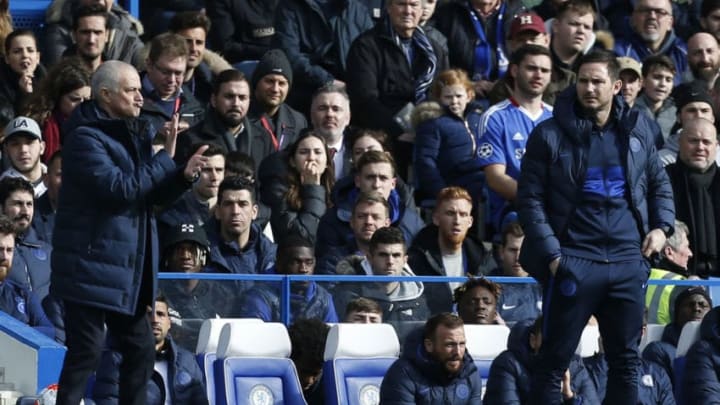Tottenham’s decision to forego transfers last season is compounding Jose Mourinho’s injury situation. Chelsea also went a season without transfers, and must be ready for the longer-term impacts that can have.
Jose Mourinho is correct in saying that injuries are limiting how much Tottenham can achieve this season, but he is only giving half the picture. He is not the first manager to have several starters out at a key juncture of the season. Chelsea are missing their starting striker, just like Tottenham; and they are both missing one of their most impactful recent arrivals: Christian Pulisic for the Blues and Stephen Bergwijn for Tottenham. Other teams, including Chelsea, have more players out. By the end of the season Chelsea will probably have lost more man-games to injury among regular starters than Tottenham.
What does make Mourinho and Tottenham unique, though, is they are facing this injury crisis a season after the club sat out two transfer windows. Not many clubs voluntarily forego any purchases in a summer and the subsequent winter.
Chelsea will be in a similar position next season, half because of FIFA and half by their own choice.
Among the many other negatives Mourinho inherited at Tottenham was the lack of strategic depth brought about by their transfer inactivity in 2018/19. I say “strategic” depth because Tottenham is missing more than a striker who can fill in for Harry Kane or a winger who can cover for Heung-Min Son. Tottenham, who built their team so intelligently through Mauricio Pochettino’s first few seasons, dismissed a necessary year of growth and change. Everything Spurs did from 2014-18 built up to the 2019 Champions League final. Last season was the perfect transition point, with the team that had been built reaching their peak but needing refreshment and reinforcement to ensure the club could keep advancing even as the players were scattered. By doing nothing, they ensured the club, like the team and that crop of players, peaked and then dropped.
Their lost season on the pitch for 2019/20 is the direct of their lost transfer season of 2018/19, allowing 2018/19 to be the pinnacle on the pitch.
Jose Mourinho is working with a team that is past their peak. As we often say, the players set the ceiling. Their ceiling was already low before the burst of injuries. If Kane and the others were fit, Mourinho would still be in a difficult position, one he could not do much to affect because of the lack of options available. The injury crisis took away his top Plan A in a club that missed the chance to build a Plan B, so now he must make do with Plan A-minus.
Unlike Tottenham, Chelsea’s transfer-less season coincided with a rebuild rather than a peak. This gives the Blues more room to grow where Tottenham had more room to fail after last season.
Chelsea have mitigated their transfer-less season by tapping their academy graduates. The young players formed the core of the starting XI until injuries brought down their numbers, at which point Frank Lampard turned to his experienced players to pull the team through. Advancing the young players has been like a transfer window of its own. Mason Mount, Reece James, Tammy Abraham, Fikayo Tomori and Billy Gilmour would be a great summer haul for any team, and the Blues were able to add them from within.
After a decade of having one of England’s best academies, Chelsea have finally learned – partly through necessity – that the transfer market is not the only way to acquire players and build a team. The academy is, in fact, up to the task.
This gives Chelsea the advantage of having two streams of incoming players.
However, Chelsea elected not to use the other stream after the transfer ban was lifted for the January window. There are plenty of arguments for not buying players in January, but going an entire season without any purchases is a rare and risky decision.
Tottenham spent about £150 million this season on four top signings: Giovanni Lo Celso (loan to own), Ryan Sessegnon, Tanguy Ndombele and Stephen Bergwijn. They have not been enough, not because they are not good players but because the team was already in decline – at best, disarray – when they arrived. Pochettino’s and Mourinho’s challenge was not merely integrating them into a side but trying to use them to stanch the decline of the current side while rebuilding around them.
That’s not where a team should be the season after a Champions League final, but it’s completely foreseeable for a team that had built towards that final and then stopped building.
Next season, more than this one, will show how much the transfer ban and the vacant January transfer window affected Chelsea.
Simply being Chelsea is always an advantage over Tottenham. But now that Wolves and Sheffield United have shown that the big six isn’t what it used to be, inertia provides much less protection than it did before.
